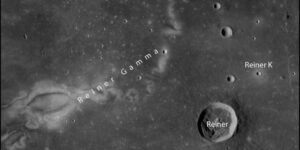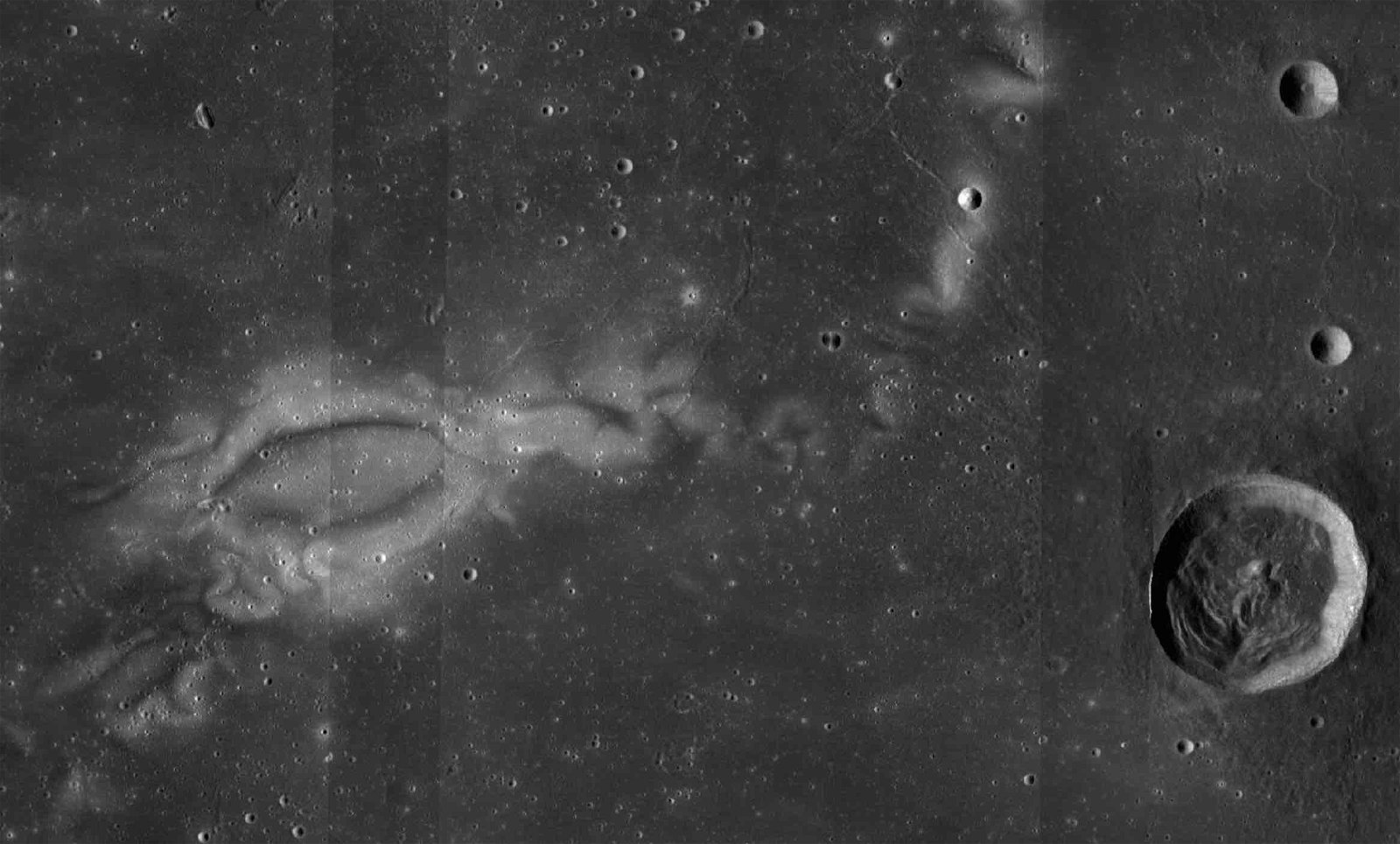An international research team has discovered what they describe as ‘anomalous’ rocks on the Moon’s surface that exhibit unique magnetic properties. Located near an area named Reiner Gamma, the small group of meter-sized rocks stood out because they are covered in a layer of dust with special reflective properties, meaning they reflect light differently than all previously known lunar rocks.
The discoveries are part of an effort to better understand the movement of dust and other processes that form and change the surface of the Moon, but they may also end up offering unexpected insights into the history of its magnetic core.
“Current knowledge of the Moon’s magnetic properties is very limited, so these new rocks will shed light on the history of the Moon and its magnetic core,” said Ottaviano Rüsch from the Institut für Planetologie. “For the first time, we have investigated the interactions of dust with rocks in the Reiner Gamma region – more precisely, the variations in the reflective properties of these rocks.”
Scanning over One Million Images Yielded the Anomalous Rocks
To make the unexpected discovery, Rüsch and his team employed artificial intelligence to scour through over one million images taken by NASA’s Lunar Reconnaissance Orbiter, which continuously orbits the Moon. The use of artificial intelligence allowed the team, which was originally looking for cracks on the Moon, to investigate such a large number of photos while scanning for expected and unexpected variances in material on the lunar surface.
“Modern data processing methods allow us to gain completely new insights into global contexts,” explained Valentin Bickel from the Center for Space and Habitability at the University of Bern. “At the same time, we keep finding unknown objects in this way, such as the anomalous rocks that we are investigating in this new study.”
This effort led to the discovery of about 130,000 “flagged’ images, half of which were then examined by human scientists. In that group, the researchers spotted some unusual reflectivity coming off of certain rocks around Reiner Gamma, prompting them to investigate further.
“We recognized a boulder with distinctive dark areas on just one image,” said Rüsch. “This rock was very different from all the others, as it scatters less light back towards the sun than other rocks. We suspect that this is due to the particular dust structure, such as the density and grain size of the dust.”
“Normally, lunar dust is very porous and reflects a lot of light back in the direction of illumination,” adds Marcel Hess from TU Dortmund University. “However, when the dust is compacted, the overall brightness usually increases. This is not the case with the observed dust-covered rocks.”


Future Robotic Rover Mission Will Examine The Rocks Up Close
After publishing their findings in the Journal of Geophysical Research Planets, the research team says they want to spend the coming weeks and months performing additional investigations. This includes trying to better understand the underlying processes that govern interactions between dust and rocks as well as doing more study on what caused the formation of the special dust structure.
According to the press release announcing the findings, these efforts will also include investigating the process behind “the lifting of the dust due to electrostatic charging or the interaction of the solar wind with local magnetic fields.”
Fortunately, the research team notes, NASA is planning to send a robotic rover to the Reiner Gamma region “in the coming years” that will be tasked with finding similar anomalous rocks covered with the uniquely reflective dust. Having a better understanding of how dust behaves in the lunar environment will be critical for planning future manned missions, they argue, especially given how many problems moon dust caused for the Apollo missions of the late 1960s and 1970s and the bold goals of putting a permanent base on the Moon.
“Even if it is still a dream of the future, a better understanding of dust movement can help with the planning of human settlements on the Moon,” the release concludes.
Christopher Plain is a Science Fiction and Fantasy novelist and Head Science Writer at The Debrief. Follow and connect with him on X, learn about his books at plainfiction.com, or email him directly at christopher@thedebrief.org.

